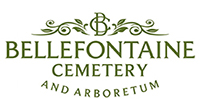Horticulture Supervisor, Kyle N. Cheesborough

The bottle gentian (Gentiana andrewsii) is a dainty herbaceous perennial, native to floodplains and moist areas in Missouri. Bottle gentian features a deep royal blue flower in mid-to-late summer, with flowers that never appear to fully open, staying closed and in the shape of a bottle. This is an intentional characteristic – the only pollinating insects strong enough to pry open the closed corollas are bumble bees. This feature excludes smaller, less efficient pollinators from collecting the nectar held within the flower, allowing the larger, more efficient bumble bees to pollinate the flowers of the bottle gentian exclusively. Gentiana andrewsii prefers moist, acidic soils, and will often show signs of stress in our more neutral or basic soils.


Beginning in late summer and lasting into fall, our native asters (Symphyotrichum spp.) and goldenrod (Solidago spp.) really steal the show. During a time when most herbaceous perennials are abandoning their blooms to begin developing seed, these two plants emerge with a last hoorah before the settling in of cooler temperatures. The asters provide an array of color ranging from blues to lavenders, and sometimes pure whites, and are a delectable late-season treat for bees and other pollinators. Goldenrod, often times regarded as a roadside weed, often dominates the fall landscape, its canary-yellow clusters of flowers swaying in the slightest breeze. With little else in full bloom during the fall months, the asters and goldenrods are primary nectar sources for pollinators, including the long-travelled monarch butterfly. Honeybees depend upon the fall food source found in these two native perennials, relying on the nectar to produce ample stores of honey for winter survival. In addition to providing a foundation for fall foraging, Symphyotrichum and Solidago species act as host plants for a number of butterflies.

Our fall asters play host to the adorable pearl crescent butterfly, and to the quick-flying checkerspots. There are many available cultivars of aster – some very well-suited for the garden – like the ‘Wood’s Purple’, a small, spreading perennials covered with lavender blooms in fall. The species Symphyotrichum novae-angliae is commonly seen in open fields, particularly those with rich, moist soils, but this plant can be up to seven feet tall and weedy in the garden. Symphyotrichum laevis, a shorter species to three feet tall, can also be weedy, spreading through underground rhizomes and prolific seed. Gardeners are best to stick with cultivars like ‘Wood’s Purple’ and ‘Wood’s Blue’, or the similarly sized ‘Purple Dome’. The most common goldenrod, Solidago canadensis, is very frequently spotted along highways and disturbed sights this time of year, with its sprays of yellow dancing tall above the Indian-grass and bluestem. The Canada goldenrod is very weedy, often aggressively so, and should not be planted in the garden. Other species, such as Solidago drummondii and Solidago rigida are less weedy, though they are tall (to five feet). The goldenrods host a number of moth species, and the seed provides food for swamp sparrows, prairie chickens, and goldfinch. Cultivars of goldenrod are available, and Solidago rugosa ‘Fireworks’ is an excellent, compact selection for the garden.

compiled by Cara L. Crocker

Post a comment